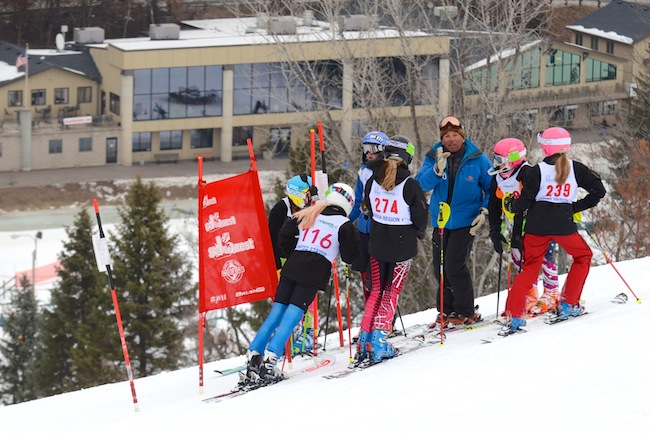USSA Sport Education Coaches Tip of the Week: June 4 2013

Each week the USSA Sport Education Department will post a Coaches Tip of the Week. The information will rotate through the ski and snowboard disciplines so check back each week to see the newest tip!
Coaching the Whole Athlete: The CAP Model
Part 1: Cognitive Development
{This is an excerpt taken from the 2013 Spring Alpine Coaches Academy presentation by Stacey Gerrish}
This will be a three part series focusing on one area of development each week.
The CAP model consists of three developmental areas: cognitive, affective, and physical. This model helps coaches understand and set appropriate expectations for each athlete and their parents. Each area of the model is progressive, moving with the athlete as they develop. The areas also encourage coaches to observe athletes, define their abilities, and coach to these findings. Coaches should also keep in mind that all people develop at different rates in each of the three areas and that development should dictate behavior and coaching content.
When coaching, we need to deliver material appropriate to the athlete's stage of thinking to produce the desired motor response and skill development. Common indicators of cognitive development include: ability to follow directions, spatial and visual abilities, logical and mathematical abilities, ability to process specific concepts and verbal-linguistic abilities.
Ability to Follow Directions
A child's ability to follow directions is based on where their development is with respect to three mental processes:
• Reversibility: the process of turning directions or thought processes backwards
• Laterality: the preference we show for one side of our body over the other
• Directionality: includes and understanding of what is "left" or "right" for another person
In order to maximize effectiveness, coaches should keep instructions simple. Focus on one thing at a time. Most people tend to focus on the last thing they hear. The timing of instructions to athletes is important. It is best to give feedback before or after an activity, not while they are in the process of completing the activity. Keep in mind that the athlete's mental circuit breaker is easily overloaded!
How do we learn?
Howard Gardner proposed eight distinct learning styles (see below). We all know the world through all eight; however, the strength and the way in which each athlete combines the intelligences to solve problems can help the coach devise strategies as to how best to reach each an individual.
The Learning Styles
• Visual-Spatial: Think in terms of physical space, aware of their environments. They can be taught through drawings, verbal and physical imagery.
• Bodily-Kinesthetic: Use the body effectively. Keen sense of body awareness. They can be taught through physical activity.
• Musical: Show sensitivity to rhythm and sound. They can be taught by turning lessons into lyrics, speaking rhythmically and tapping out time.
• Interpersonal: Understanding of interacting with others. They learn through interaction and group activities.
• Intrapersonal: Understanding one's own interests and goals. They tend to shy away from others. They can be taught through independent study and introspection.
• Linguistic: Uses words effectively. These learners have highly developed auditory skills and often think in words. They can be taught by encouraging them to say and see words.
• Logical-Mathematical: Use reasoning. They are calculating. They think conceptually, abstractly, and are able to see and explore patterns and relationships. They can be taught through logic and investigation. They need to learn from concepts before they can deal with details.
An investigation of an athlete's cognitive development can reveal how they use each component of intelligence to think or process information, what types of things they enjoy doing, and what coaching strategies you should use to meet their needs. Athletes are letting you know through their behavior how they learn. Take a look at what they are doing between runs or drills. Most likely, word-smart kids will be talking, picture-smart kids will be doodling in the snow, people-smart kids will be socializing, and the body-smart kids will be fidgeting.
Coaching a group of young athletes that most likely have several of the learning styles represented can be difficult. These are some tools you can use to effectively engage multiple learning styles:
1. Visuals
2. Printed words
3. Sound
4. Motion – to depict human performance so the learner can copy your movements
5. Color
6. Tangible real objects (not models) are useful to teach motor and cognitive skills
7. Instructional setting – provide corrective feedback for individual athletes
8. Figure out which learning style each of your athletes uses most, every athlete is different!
9. Reading ability – use pictures for poor readers and texts for good readers
10. Performance – practice the task, which sets the stage for reinforcement
Here is a PDF Copy of Part 1: Coaching the Whole Athlete: The CAP Model Part 1: Cognitive Development
Check back next week for Part 2 of the CAP Model, affective development.
